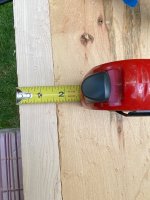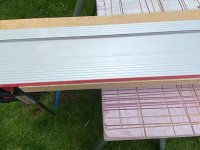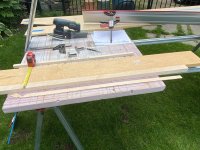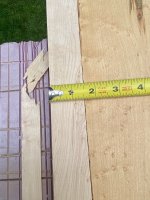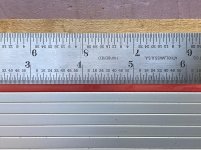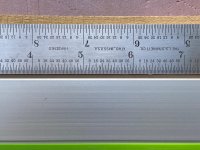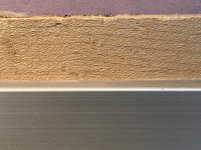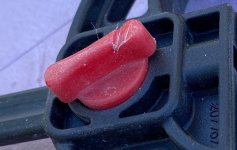Cheese
Member
FestitaMakool said:Cheese, so.. now you say that I (we) need to buy 2-two double squares.. cause they work so well in pairs [big grin]. Pocket friendly parallel guides they are!
How do you like the Mafell clamps? I see Bessey are now offering them with their name on them, I like the features..
Ya that's funny Festita...the original thread was "Why do you need a Starrett double square?" and here, less than a week later, we've since morphed into why we need 2 Starrett double squares. [big grin]
This method is real slick and will provide uniform cut widths.
I rather liken it to the original TSO GRS-16 guide rail square who's form was reminiscent of a Starrett combination square. That works from one edge only...then later TSO came out with their GRS-16 PE which resembles a Starrett double square. That works from both edges.
The new Mafell clamps are really nice...better than I thought they'd be. I originally contacted Mafell and asked to purchase the original metal screw version because they were metal and just seemed to be more robust than the newer glass reinforced nylon clamps. The metal screw clamps were basically obsoleted and I now know the reason why. These are a lot nicer.
The only thing to note is that if you place the Mafell rail on the pencil line and then tighten the new clamps, they will move off the pencil line by about .25-.50 mm.
Thinking about it, maybe that's the reason Mafell ditched the screw clamp version. I would expect the screw clamp version to move more than the latest iteration because you're tightening the screw and the screw pad is moving around on the surface of the wood. Any movement of the pad would produce a movement of the rail.
The new clamps tighten by moving vertically so to minimize any rail movement.

